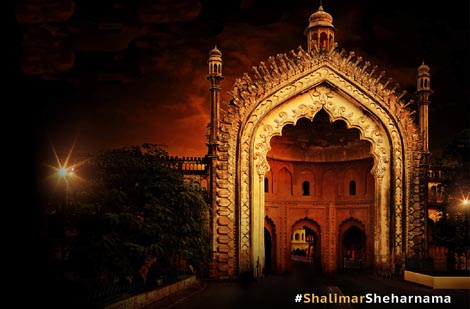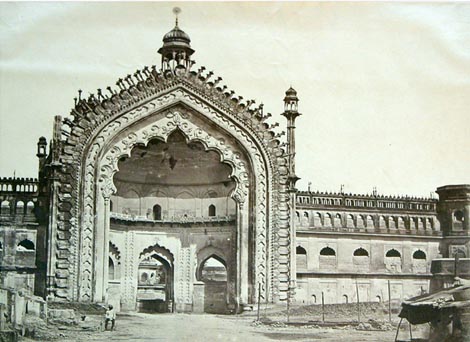Rumi Darwaaza - The Gateway to Lucknow’s Heart
Here’s a little thought experiment - Think of the first thing that pops into your mind when you think of the city of Lucknow. What did you think of? Surely Tehzeeb & Kebabs must’ve sprung to your mind, but there is one other thing that must’ve popped up inadvertently - The Magnificent facade of the iconic Rumi Gate - The Unofficial Symbol of the City of the Nawabs.

Built in 1748 during the period when the resurgent Nawabs of Awadh were trying to restore the brilliance of Mughal Architecture, the Gate stands at a gargantuan 60 Feet tall, modelled after the famous Sublime Porte (Bab-iHümayun) in Istanbul. This is perhaps one of the reasons why it is also sometimes referred to as the Turkish Gate. The name of the gate literally translates to Roman Gate, which makes sense considering the Eastern Roman Empire had its capital in Constantinople (now Istanbul) in Turkey. It is also surmised that the name might be derived from the 13th Century Sufi Mystic Jala ad-Din Muhammad Rumi. It is adjacent to the Asafi(Bara) Imambara, one of Lucknow’s most iconic monuments, and it used to lead the entrance to the Old City during early Nawabi Rule. Later, it marked the entrance to a Palace for the Nawabs but it was razed to the ground during the British Insurgency.

Architecture
The Rumi Gate epitomises the resurgent Lucknow School of Architecture, which primarily acted as a churning pot for various schools of Architecture from both the Islamic and Non-Islamic world. In this instance, we see a beautiful juxtaposition of Nawabi Gharana Architecture with Turkish Architecture. The use of Limestone instead of the Red Sandstone preferred by the Mughals sets it miles apart from the other contemporary architecture being developed in India.
The top (or crown) of the edifice holds a Chhatar or Chhatri (Umbrella) that looks out on both sides of the Gate, with a staircase leading up to it. It is supposed to have been either a structure for the Guards or one where a giant lantern was lit at night, with popular history agreeing to the second estimate more so than the first one. The structure of the gate is decorated beautifully with inlaid flowers, vines and designs, a testament to the intricacy of the craftsmanship. It also stretches out to either side more so like a building than a gate and 4 minarets flank its corners. Truly a masterpiece of Awadhi engineering & architecture.

Cultural & Historic Significance
The Rumi Gate is yet another example of the use of Keynesian Economics by the Nawab Asaf-Ud-Daula during the time of great famine & depression in Awadh. Along with the Asafi Imambara, the Rumi Gate was constructed to provide respectable employment and thus food to the huge number of the populace dying from the famine. The gate did not take long to get built, and for such a magnificent structure it took only 2 years for completion. The poets & then historians regard the construction as a good omen for the Awadh Region as by the time the gate was completed, the famine had begun to subside a little, marking the beginning of another glorious period in Awadh’s history.
The Rumi Gate is near synonymous with the city of Lucknow at this juncture in history and if cities had logos, this marvellous edifice and feat of Nawabi Architecture would surely grace the pages of history as the symbol of Awadh.
